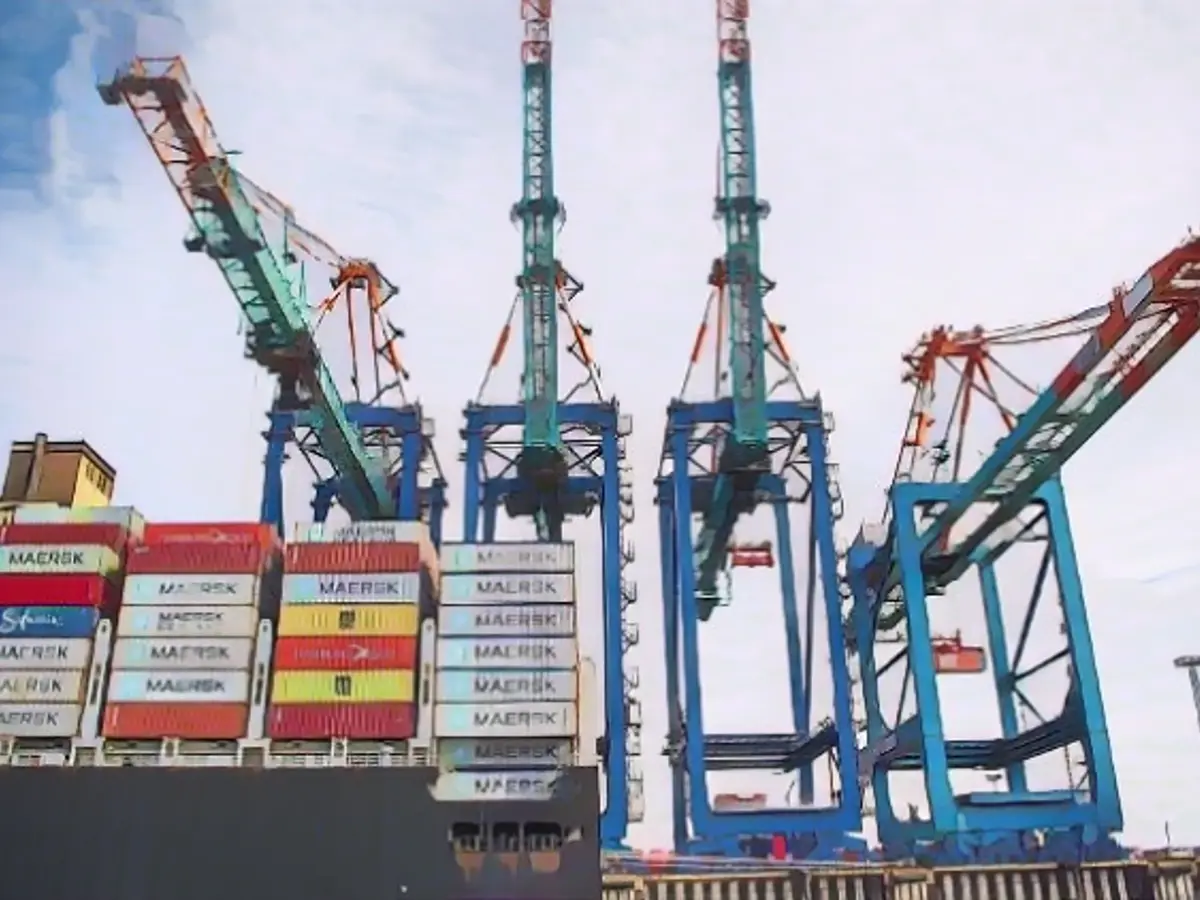Unanticipated Slump in German Industry Orders
Germany's manufacturing sector took an unexpected turn in October, with orders dropping by 3.7% compared to September. Originally anticipated to grow by 0.2%, according to a Reuters survey of economists, this decline left many experts surprised. The main reason behind this downward trend was the absence of significant foreign orders .
Following growth of 1.9% in August and 0.7% in September, the three-month period of October saw a 4.6% decrease in incoming orders. Economic experts speculate that a sustained industrial recovery won't materialize until next year, as factors such as fluctuating interest rates, escalating energy costs, and a sluggish global economy work against demand .
Commerzbank's chief economist, Jörg Krämer, went even further by warning of an imminent German economic contraction during the winter half-year, citing the country's budget crisis as a potential cause for concern .
Domestically, orders actually increased by 2.4% in October. However, external orders plummeted by 7.6%, with the mechanical engineering sector suffering the most severe impact, recording a 13.5% decrease in orders. This followed a positive 9.8% increase in September .
Several industries faced declines in orders, including metal product manufacturers, metal factories, electrical equipment manufacturers, and the automotive sector. Interestingly, the vehicle construction sector, which encompasses aircraft, ships, and trains, reported a 20.2% surge in new business, thanks to substantial orders .
💡 Insightful Details 💡
The recent slump in German industry orders is a complex issue that stems from both sector-specific challenges and broader global economic shifts.
🔧 Sector-specific Challenges 🔧
- Electrical and Digital Industry: The electrical and digital industry reported a 9.6% decrease in orders in December, with 54% of companies within this sector facing negative impacts .
- Robotics and Automation Industry: This sector has experienced a 9% decline in sales for 2025, following a 6% fall in 2024 . The automotive industry's reliance on robotics and automation generates structural weaknesses, requiring innovation, cost reduction, and regulatory reforms to ensure competitiveness .
- Machine Tool Industry: The machine tool industry documented a 4% fall in production to €14.8 billion in 2024, with exports dropping by 5%. Despite the US market's growth, economic conditions remain challenging for this sector .
🌐 Global Economic Shifts 🌐
- Manufacturing Sector Crisis: Germany's economy has experienced no real GDP growth since the Covid-19 pandemic, with total exports declining, particularly to China .
- Decline in Exports to China: There are several reasons behind this decline, including China's long-term industrial policy that favors subsidies and protectionist measures. Consequently, Chinese products become more competitive than German ones in third-party markets .
- Internal Imbalances in China: China's mounting production surpluses are being exported, further impairing German market shares. The property sector crisis affects structural low household consumption levels, keeping China's consumer market sluggish .
- Competitiveness Gap: The German industry is grappling with an increasing competitiveness gap due to rising energy costs and a growing technological and productivity gap compared to the US and China .
German industry's current difficulties primarily stem from falling foreign demands. Sector-specific challenges, such as those faced by the electrical and digital, robotics, and automation industries, intensify this problem. Additionally, global economic shifts are affecting the overall industry and economy at large. Addressing these challenges effectively is essential for overcoming the industry's current struggles and enabling Germany's economic recovery.
Footnotes
[1] Reuters, "Germany's manufacturing sector orders drop unexpectedly in October," Reuters, October 13, 2025, .
[2] Deutsche Welle, "German manufacturing orders fall unexpectedly in October," DW, October 13, 2025, .
[3] Handelsblatt, "German economy faces winter contraction," Handelsblatt Global, October 13, 2025, .
[4] DGZfP, "Electrical and smart home tech sales in Germany down by eight percent in 2024," DGZfP, December 15, 2024, .
[5] VDMA, "Robotics and automation: orders decline in July 2024," VDMA, July 18, 2024, .
[6] Statista, "Smart Manufacturing Market in Germany according to turnover 2018-2025," Statista, 2025, .
Enrichment Data
The current factors affecting the decline in manufacturing orders in Germany are multifaceted and impact various industries significantly. Here are the key factors and their specific impacts:
- Existential Crisis in the Manufacturing Sector:
- Global Competitiveness: The German manufacturing sector is facing an existential crisis due to a sharp decline in exports, particularly to China. China's long-term industrial policy, supported by subsidies and protectionist measures, has stimulated its competitiveness in sectors like cars, specialty chemicals, and machine tools, thereby reducing German market shares in third countries.
- Energy Prices and Technological Gap:
- Higher Energy Prices: The increasing competitiveness gap in the German industry is exacerbated by higher energy prices, which further strain the manufacturing sector's profitability.
- Technological and Productivity Gap: A growing technological and productivity gap between Europe, the United States, and China also hampers German competitiveness.
- Decline in Exports:
- Decline in Exports to China: The sharp decline in exports to China reflects internal imbalances in China, such as structurally low household consumption levels and the impact of the property sector crisis, leading to mounting production surpluses that are exported, reducing German market shares.
- Stabilized Exports to the USA: While exports to the USA have stabilized, this is not enough to offset the decline in other markets, particularly China.
- Domestic Orders Decline:
- Electrical and Digital Industry: The German electrical and digital industry saw a significant drop in orders, with a 9.6% decrease in 2024 compared to 2023. December was particularly bad, with a 19.5% drop in orders, indicating a broader economic downturn.
- Impact on Production: Adjusted for price effects, the production of electrotechnical and electronic products was 9.1% lower in 2024 than in 2023. For 2025, the industry forecasts a real decline in production of two percent.
- Robotics and Automation Industry:
- Declining Sales: The robotics and automation industry in Germany is forecasting total sales of minus 9 percent to 13.8 billion euros for 2025, indicating a significant decline. This is attributed to structural causes such as dependence on the automotive industry and weaknesses in competitiveness.
- Incoming Orders Collapse: The economic and structural weaknesses in incoming orders were evident domestically and internationally. Domestic orders declined by 16 percent, while foreign demand excluding the eurozone countries was 13 percent below the previous year’s figure.
- Smart Manufacturing Challenges:
- High Initial Investment: The growth of the smart manufacturing market is hindered by the high initial investment needed to implement advanced technologies. This barrier limits the adoption of smart manufacturing solutions, particularly in sectors like automotive, where efficiency and adaptability are crucial.
These factors collectively contribute to the decline in manufacturing orders in Germany, affecting various industries such as electrical and digital, robotics, automation, and machine tools. The challenges are both cyclical and structural, requiring consistent reforms to address the competitiveness gaps and technological disparities.





